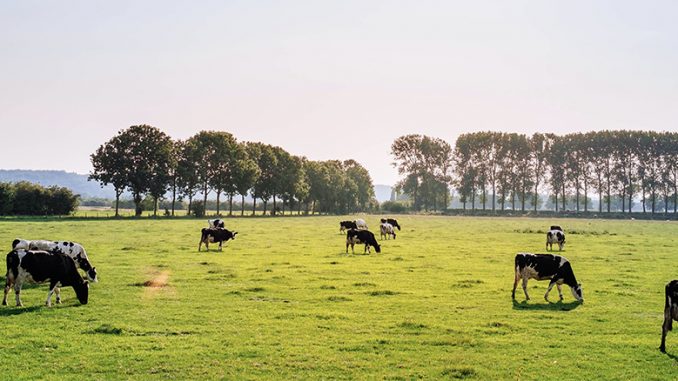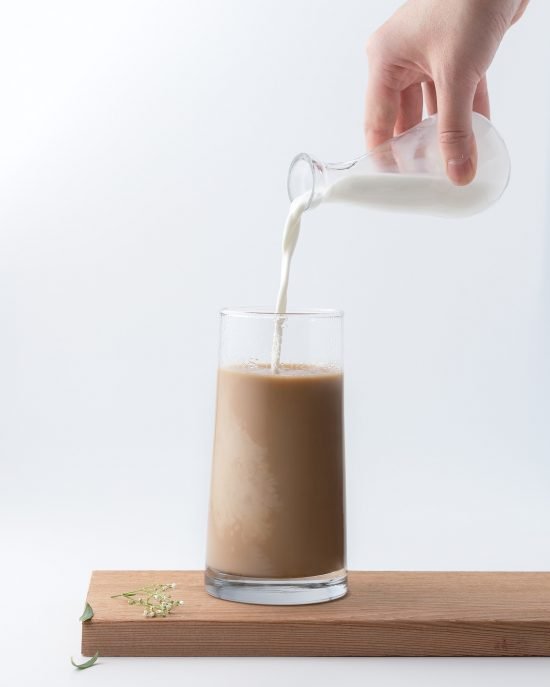
With an endless variety of alternative milks to choose from, we explore some of the more popular options for their taste and environmental impact.
BY EMILY JOY MENESES
SPECIAL TO BARISTA MAGAZINE ONLINE
Cover photo by Leon Ephraim, courtesy of Unsplash
My fellow lactose-intolerants know that life has gotten a whole lot easier since the days of choosing solely between dairy and soy milk. Over the past few years, the food and beverage industry has fully embraced the concept of alternative milk, bringing every variety imaginable to the table. A few examples include oat, almond, hazelnut, macadamia, hemp … but the list goes on and on. Nowadays, it’s pretty common knowledge that alternative milk is more sustainable than dairy milk, uses less land and water, and generates lower amounts of greenhouse gases. However, even amongst alternative milks, there’s a lot of variance in environmental impact.
Whether you’re well-versed in the alternative milk world or traversing into the dairy-free realm for the very first time, here are some of the coffee industry’s most used alternative milks—and what you should know about them in terms of taste, texture, and sustainability:

Soy milk
Ah, good old soy: the original plant-based milk! In its glory days, soy was known as the go-to alternative, popular for its nutritional benefits and milk-like taste and texture. Packed with potassium and as much protein as cow’s milk, soy milk is often also fortified with vitamins A, B-12, and D, as well as calcium. Some cons: Soy is a common allergen and contains estrogen-like compounds called isoflavones, which in high amounts can lead to hormone-related health concerns, like a disruption in thyroid function or fertility issues. In terms of sustainability, soy milk production has a small carbon footprint and uses little water and land.
Almond milk
Almond milk made its way into the food and beverage world several years after soy, and though many argue that it’s better in taste and texture, its environmental impact is widely debated. Almond milk has the lowest greenhouse emissions and uses the least amount of land to grow, yet the milk production uses about 10 times as much water as soy milk production. In addition, most almond trees are located in California: a state already prone to droughts and largely dependent on freshwater irrigation. Almond milk does offer ample nutritional benefits (it’s packed with vitamin E, and often fortified with calcium and vitamin D), but is its water usage worth it? You might be better off looking for another plant-based milk option.
Oat milk
A millennial favorite, oat milk is as common as dairy milk nowadays in many major U.S. cities. Research shows that compared to almond milk and soy milk, oat milk has a lower adverse environmental impact; overall, it uses far less water and land, and is responsible for a fraction of the greenhouse gas emissions. In addition, oat milk has the smooth creaminess that coffee consumers often look for in dairy milk, making it a wonderful choice for cafés and home baristas alike.
Hemp milk
Just when you’ve learned about hemp’s versatile capabilities as clothing and food, we’re telling you that there are now barista versions of hemp milk! Not to be confused with the hemp used for marijuana, hemp milk derives from the seeds of a hemp plant. Those seeds are like a superfood—they’re loaded with as much protein as soy beans, plus vitamin E, magnesium, potassium, and more. It doesn’t have any of the common allergens, and since it is a plant it breathes in four times as much CO2 as trees. It also uses very little water to produce, and grows naturally without pesticides.

Everyone has their go-to type of milk for their own unique reasons; these are just a few things to take into account when making the right choice for you. Be sure to check out our quick and easy homemade oat milk recipe, along with other ways to make your coffee regimen more eco-friendly.

ABOUT THE AUTHOR
Based in Los Angeles, Emily Joy Meneses is a writer and musician passionate about culture and collective care. You can regularly find her at Echo Park Lake, drinking a cortado and journaling about astrology, art, Animal Crossing, and her dreams. Explore her poetry, short stories, and soundscapes on her website.

